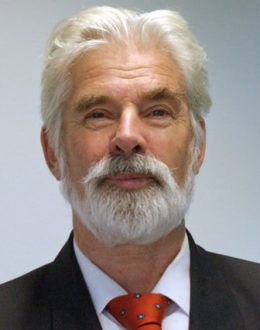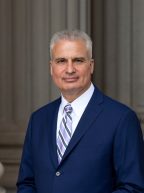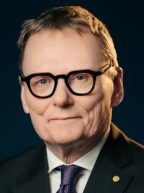
Klaus Hasselmann keynote speaker
- Climate Change and Paths to Sustainability
- Optimal Fingerprints for the Detection of Time-Dependent Climate Change
- Reframing the Problem of Climate Change: From Zero Sum Game to Win-Win Solutions
Klaus Hasselmann is a German oceanographer and climate modeller. He is Professor Emeritus at the University of Hamburg and former Director of the Max Planck Institute for Meteorology. He was awarded the 2021 Nobel Prize in Physics jointly with Syukuro Manabe and Giorgio Parisi.
He is best known for developing the Hasselmann model of climate variability, where a system with a long memory (the ocean) integrates stochastic forcing, thereby transforming a white-noise signal into a red-noise one, thus explaining (without special assumptions) the ubiquitous red-noise signals seen in the climate.
Hasselmann has published papers on climate dynamics, stochastic processes, ocean waves, remote sensing, and integrated assessment studies. His reputation in oceanography was primarily founded on a set of papers on non-linear interactions in ocean waves. In these he adapted Feynman diagram formalism to classical random wave fields. He later discovered plasma physicists were applying similar techniques to plasma waves, and that he had rediscovered some results of Rudolf Peierls explaining the diffusion of heat in solids by non-linear phonon interactions. This led him to review the field of plasma physics, rekindling an earlier interest in quantum field theory.
Hasselmann has stated that "it was really an eye-opener to realize how specialized we are in our fields, and that we need to know much more about what was going on in other fields. Through this experience I became interested in particle physics and quantum field theory. So I entered quantum field theory through the back door, through working with real wave fields rather than with particles."
In the field of climate change, Hasselmann pioneered a mathematical description of the stochastic forcing of the climate by the fluctuating weather. The idea is that climate variability need not come about merely by changes in external forcing (such as solar radiation or greenhouse gases), but even under fixed conditions the climate experiences noisy forces due to the randomly developing weather patterns. This is analogous to the motion of a heavy particle (the climate) being bombarded by randomly moving small particles (the forces exerted by the weather), but translated to a much more complicated high-dimensional nonlinear system. Knowledge of the short-term fluctuations of the weather then allows to predict the stochastic variability of the climate.
Hasselmann later suggested how to extract 'fingerprints' of anthropogenic climate change. The challenge is to recover in an optimal fashion the signal of systematic climate change in the presence of strong climate variability. He applied the theory of optimal linear filters to this multivariate, space-time dependent complex problem in order to give a prescription of how to extract these fingerprints.
Both the theory of stochastic climate forcing and the development of the fingerprint method are key contributions to climate science. Hasselmann has won a number of awards over his career. He received the 2009 BBVA Foundation Frontiers of Knowledge Award in Climate Change; in January 1971 the Sverdrup Medal of the American Meteorological Society; in May 1997 he was awarded the Symons Memorial Medal of the Royal Meteorological Society; in April 2002 he was awarded the Vilhelm Bjerknes Medal of the European Geophysical Society. He was awarded the 2021 Nobel Prize in Physics jointly with Syukuro Manabe and Giorgio Parisi for groundbreaking contributions to the "physical modeling of earth's climate, quantifying variability and reliably predicting global warming" and "understanding of complex systems".
* and we really do it immediately




